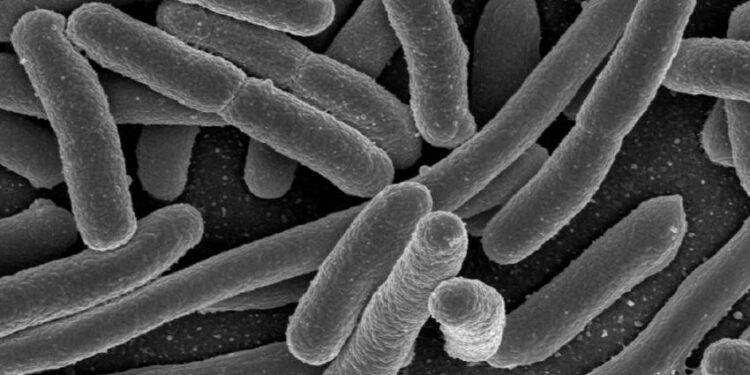Escherichia coli. Credit: Rocky Mountain Laboratories, NIAID, NIH
Antibiotic-resistant bacteria pose a growing threat to public health. Each year, they account for more than 2.8 million infections, according to the U.S. Centers for Disease Control and Prevention. Without new antibiotics, even the most common injuries and infections can become fatal.
Scientists are now close to eliminating this threat, thanks to a collaboration led by Texas A&M University that has developed a new family of polymers capable of killing bacteria without inducing antibiotic resistance by disrupting the membrane of these micro- organizations.
“The new polymers we have synthesized could help combat antibiotic resistance in the future by providing antibacterial molecules that work through a mechanism to which bacteria do not appear to develop resistance,” said Dr. Quentin Michaudel, assistant professor in the Department of Chemistry and head researcher in the research, published on December 11 in the Proceedings of the National Academy of Sciences.
Working at the interface of organic chemistry and polymer science, the Michaudel lab was able to synthesize the new polymer by carefully designing a positively charged molecule that can be stitched together multiple times to form a large molecule consisting of the same repeating charged pattern at using a carefully selected pattern. catalyst called AquaMet.
According to Michaudel, this catalyst is essential because it must tolerate a high concentration of fillers and also be soluble in water, a characteristic he describes as uncommon for this type of process.
After achieving success, the Michaudel Laboratory tested its polymers against two main types of antibiotic-resistant bacteria: E. coli and Staphylococcus aureus (MRSA) — in collaboration with the group of Dr. Jessica Schiffman at the University of Massachusetts Amherst . While awaiting these results, the researchers also tested the toxicity of their polymers on human red blood cells.
“A common problem with antibacterial polymers is the lack of selectivity between bacteria and human cells when targeting the cell membrane,” explained Michaudel. “The key is to strike a balance between effectively inhibiting the growth of bacteria and killing multiple cell types indiscriminately.”
Michaudel credits the multidisciplinary nature of scientific innovation and the generosity of dedicated researchers across campus and across the country at Texas A&M as factors in his team’s success in determining the perfect catalyst for their assembly of molecules.
“This project was several years in the making and would not have been possible without the help of several groups, in addition to our collaborators at UMass,” Michaudel said.
“For example, we had to send samples to the Letteri lab at the University of Virginia to determine the length of our polymers, which required the use of an instrument that few labs in the country have. We are also extremely grateful to (biochemistry PhD candidate) Nathan Williams and Dr. Jean-Philippe Pellois here at Texas A&M, who provided their expertise in our assessment of toxicity against red blood cells.
Michaudel says the team will now focus on improving the activity of its polymers against bacteria, particularly their selectivity for bacterial cells over human cells, before moving on to in vivo testing.
“We are in the process of synthesizing a variety of analogs with this exciting goal in mind,” he said.
The team’s paper features a Michaudel Lab member and a Texas A&M chemistry Ph.D. graduate Dr Sarah Hancock as first author. Other key contributors to the Michaudel Lab include An Tran, a graduate student in chemistry, Dr. Arunava Maity, a postdoctoral researcher, and Dr. Nattawut Yuntawattana, a former postdoctoral researcher, who is now an assistant professor of materials science at Kasetsart University in Thailand.
More information:
Sarah N. Hancock et al, Ring-opening metathesis polymerization of N-methylpyridinium-fused norbornenes to access main-chain antibacterial cationic polymers, Proceedings of the National Academy of Sciences (2023). DOI: 10.1073/pnas.2311396120
Provided by Texas A&M University
Quote: A research team develops polymers capable of killing bacteria (December 22, 2023) retrieved December 25, 2023 from
This document is subject to copyright. Except for fair use for private study or research purposes, no part may be reproduced without written permission. The content is provided for information only.



